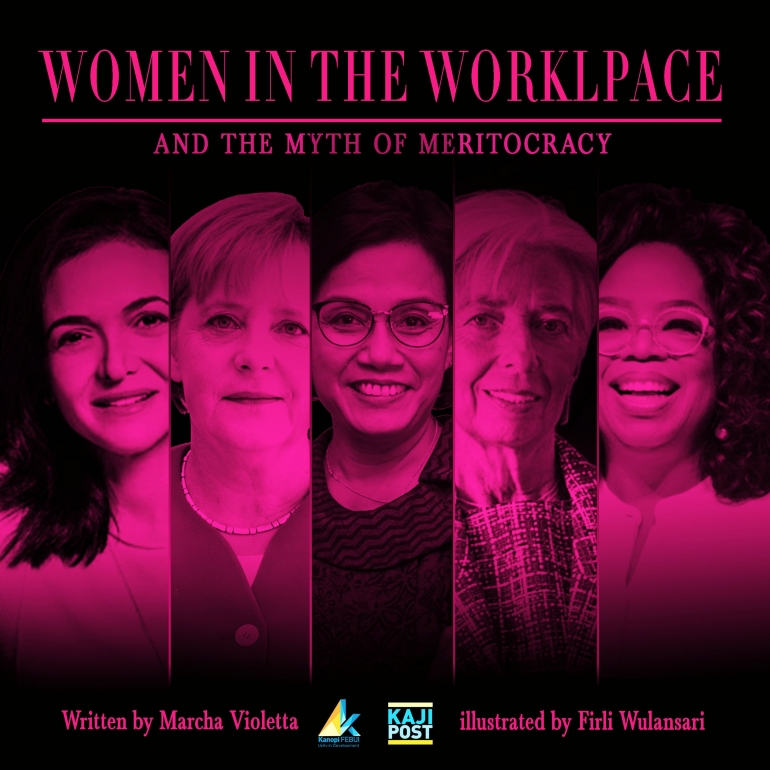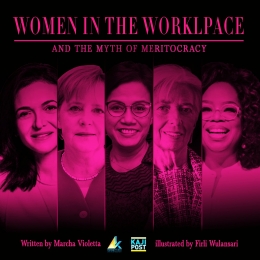Meritocracy, by definition, is a social system in which "merit or talent is the basis for sorting people into positions and distributing rewards" (Scully, 1997 as cited in Castilla & Benard, 2010). When we talk about equality, 'meritocracy' seems to be one of the words that have the power to restore people's faith in the possibility of an equal world.
Little do they know, such a system is built upon complex factors that cannot be disentangled so easily to reveal a person's true quality should they be stripped of their inherent privileges. Keep in mind that this is not meant to wholly discredit those who won the life lottery even before they were born because there were some cases of them not living up to what is expected of them.
Meritocracy as a theory is flawed. In practice, meritocracy has failed women in the workplace. In an article published by Cornell University, Castilla & Benard (2010) found that in an organization that prides itself on meritocracy, managers ironically show greater bias in favor of men over equally performing women in translating employee performance evaluations into monetary rewards and other key career outcomes i.e., hiring, promotion, termination. They called this 'the paradox of meritocracy'.
The paradox is created by two mechanisms. The first explains how an organizational culture that prides itself on meritocracy may amplify bias by convincing managers that they are unbiased, which in turn discourages them from double-checking their own behaviors for signs of prejudice. This mechanism happens through the role of moral credentials: "individuals are more prone to express prejudiced attitudes when they feel that they have established their moral credentials as a non-prejudiced person" (Monin & Miller, 2001 as cited in Castilla & Benard, 2010).
Secondly, if managers believe that the members of organizations are unbiased, then the fairness of their actions are less likely to be questioned, thus they are more likely to let prejudice cloud their decisions. As we can see, the relationship between meritocracy and equality is not necessarily deterministic. Therefore, we must seek other means that work in tandem with meritocracy to empower women.
Women in The Workplace
In an abbreviated version of her article published in the Harvard Business Review, Melinda Gates and her team identified three critical strategies to propel gender equality in the workplace. The first two are quite intuitive; dismantling the barriers (i.e., stereotypes, sexual harassment and discrimination, and caregiving responsibilities) that have pinned women under oppression for hundreds of years and hinder their professional advancements and exerting external pressure to the private sector to join in the movement.
The third one interestingly enough stems from the idea that bias cannot be eliminated, but they can be disrupted in certain ways that are favorable for women. Iris Bohnet, a behavioral economist and professor at the Harvard Kennedy School, is the architect behind this concept. One case that shows how tweaking the design of the workplace benefits women is the "bundle decisions" used in nominating multiple, instead of only one, names to be a Nobel Prize winner in 2018. This way, women and people of color are more likely to appear as the nominees and eventually, as the Laureates.
Her earlier research also indicated that informing managers of their past pattern of promotion by gender can alter the way they hire in the future. In other words, it is a way of helping them to acknowledge their bias and change their behaviors in accordance with the aim of reducing the gender disparity in the workplace especially for leadership roles as well as wage and income. In addition, blind auditions would also help stakeholders to judge candidates based on their qualities and not their genders.
Disrupting bias through design tweaking is only one of the myriad of ways to help us achieve gender equality. In truth, there are still a lot of layers of the glass ceiling that has to be broken. Though we may not live to see the day where women are no longer addressed as the second-class Homo sapiens, reduced down to mere companion for men, and deprived of the rights to thrive like their male counterparts; we all must collaborate to make sure that that day will come and that it will come sooner.
by Rosalia Marcha Violeta | Economics 2018 | Staff of Studies Division Kanopi FEB UI 2019







